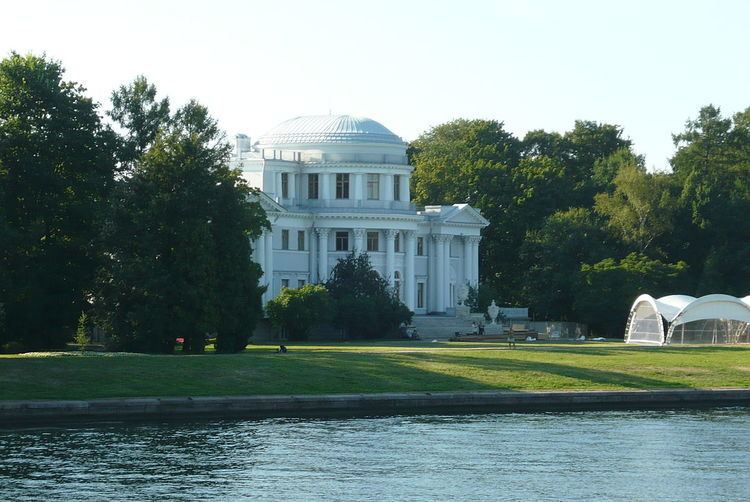Opened 1822 Architect Carlo Rossi | Phone +7 812 430-09-11 Function Museum, Palace | |
 | ||
Address Елагин остров, 4, лит. Б, Sankt-Peterburg, Russia, 197183 Similar Yelagin Island, Tauride Palace, Central Park of Culture a, Gatchina Palace, Oranienbaum - Russia | ||
yelagin palace 1914
Yelagin Palace (Елагин дворец; also Yelaginsky or Yelaginoostrovsky Dvorets) completed in 1822 is a palace in Saint Petersburg which is situated on Yelagin Island in the Neva River and served as a royal summer palace during the reign of Tsar Alexander I. Constructed on the site of an earlier mansion built during the rule of Catherine the Great, the villa was designed for Alexander's mother, Maria Fyodorovna, by the architect Carlo Rossi. The palace was destroyed during World War II but was rebuilt and currently houses a museum.
Contents
The isle to the north of the imperial Russian capital owes its name to its former proprietor, Ivan Yelagin (1725–94), a close ally of Catherine II from her early days as Grand Duchess. His Palladian villa might have been designed by Giacomo Quarenghi. Yelagin was fascinated with the idea of extracting gold from ordinary materials and retreated to the villa for his secretive research in alchemy. Count Cagliostro was summoned by Yelagin to help him in these activities, but fled the island after Yelagin's secretary had slapped him in the face.
After the Dowager Empress Maria Feodorovna declared that she was too old to make daily trips to such distant residences as Pavlovsk Palace and Gatchina Castle, her son Alexander I bought the estate from Yelagin's heirs and asked Carlo Rossi to redesign the villa. Its lavish Neoclassical interiors were decorated by Giovanni Battista Scotti, Vasily Demuth-Malinovsky, and Stepan Pimenov.
After Maria Feodorovna's death, the palace remained deserted for long periods of time. Nicholas II leased it to his prime ministers such as Sergei Witte, Pyotr Stolypin, and Ivan Goremykin. The Bolsheviks turned the palace compound into "a museum to the old way of life". In the Siege of Leningrad it was damaged by a shell and burnt to the ground. It was rebuilt in the 1950s and was used as a resort for workers. Since 1987 it has housed a collection of objets d'art from the 18th and 19th centuries, notably precious glassware. The entrance is guarded by two lion sculptures, inspired by the Medici lions in Florence.
